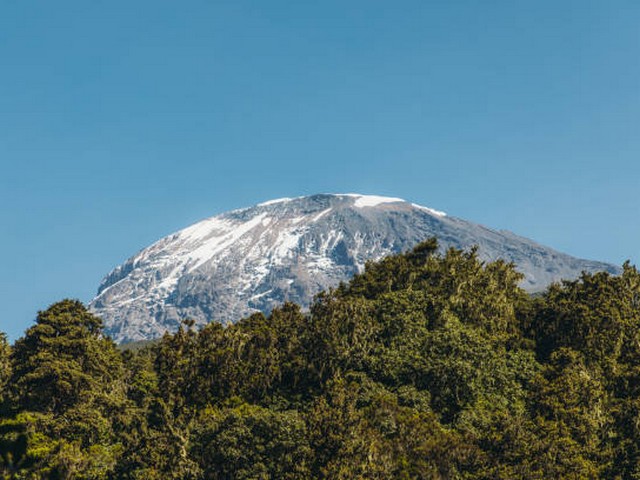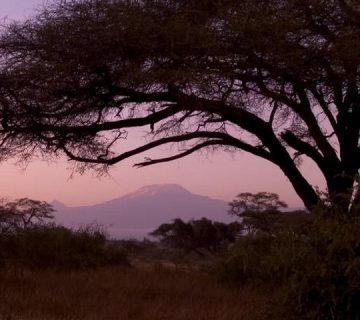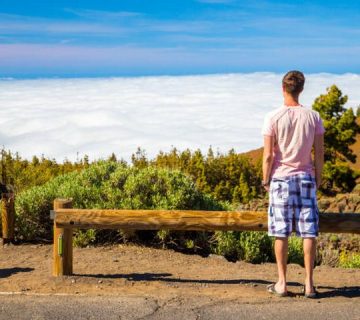Conquer the Heights: Understanding Kilimanjaro Climbing Difficulty Levels
Ascend into the clouds on a journey that challenges the spirit and inspires the soul. Climbing Mount Kilimanjaro, the roof of Africa, isn’t just an adventure; it’s a testament to human resilience and the pursuit of dreams. Each step on this majestic mountain brings you closer to understanding both Kilimanjaro’s grandeur and your own inner strength. However, like any formidable nature’s marvel, Kilimanjaro demands respect with its varying difficulty levels. At Kilimanjaro Centre for Trekking and Ecotourism (KCTE), we specialize in making this dream a reality, guiding you safely through each zone of this mighty mountain.
Why the Climb Matters
Mount Kilimanjaro, standing at a breathtaking 5,895 meters above sea level, is not only Africa’s tallest peak but also the world’s highest free-standing mountain. This makes it a beacon for adventurers worldwide. The journey to its summit involves traversing through five distinct ecological zones, each presenting its own set of challenges and rewards. Understanding the difficulty levels of Kilimanjaro’s routes is crucial, whether you’re a seasoned climber or a determined novice. This knowledge ensures that you choose the right path that aligns with your physical capabilities and climbing ambitions.
Breaking Down the Routes: Choosing Your Path Wisely
Marangu Route: The Gradual Ascent
Often dubbed the "Coca-Cola" route, Marangu is famed for being the most straightforward path to Kilimanjaro’s summit. It is the only route that offers sleeping huts with basic amenities. This makes Marangu a favored choice for those who prefer a bit more comfort during their ascent. However, don’t be misled by its reputation for ease. The route still demands physical stamina and mental fortitude, especially during the summit night when climbers face the steep ascent to Uhuru Peak.
Machame Route: The Whiskey Challenge
Contrasting Marangu’s gentle slopes, the Machame route is affectionately known as the "Whiskey" route for its tougher climbing profile. This path is more suited for adventurous souls who possess some hiking or trekking experience. The Machame route is steeper and physically more demanding but rewards climbers with stunning scenic vistas and a higher success rate, thanks to its "climb high, sleep low" approach aiding acclimatization.
Lemosho Route: The Scenic Sojourn
If scenery is what captivates you, then Lemosho is your go-to choice. Known for its beautiful landscapes, this route offers a more gradual ascent and better acclimatization opportunities, making it a great option for climbers who have a flexible timetable and a strong desire to immerse in the natural beauty of Kilimanjaro.
Rongai Route: The Remote Trail
For those seeking solitude away from the more crowded paths, the Rongai route presents a unique perspective. It starts from the north side of Kilimanjaro, bordering Kenya, and is less frequented. This route is considered one of the easier paths after Marangu and is notable for its wilderness feel and possibility of wildlife sightings.
Umbwe Route: The Steep Sprint
The Umbwe route is the steepest, shortest, and most challenging path on Kilimanjaro. Recommended only for very strong hikers who are confident in their ability to acclimatize quickly, this route tests your endurance right from the start.
Acclimatization: Your Key to Success
Understanding and preparing for altitude sickness is a significant aspect of your climb. Kilimanjaro’s high altitude means thinner air and less oxygen. Routes like Machame and Lemosho offer better acclimatization profiles, which can greatly influence your overall success and enjoyment of the climb. Here at KCTE, we emphasize the importance of taking your time. "Pole Pole" (slowly, slowly in Swahili) is not just a mantra but a practical approach to high-altitude trekking.
Training and Preparation: Getting Mountain Ready
Climbing Kilimanjaro is no small feat and requires a reasonable degree of physical fitness and preparation. Tailoring your training towards long treks, cardio exercises, and altitude acclimatization can make a significant difference. Additionally, mental preparation is just as crucial as the physical; maintaining a positive mindset can keep your motivation high throughout the journey.
Why Choose Kilimanjaro Centre For Trekking and Ecotourism (KCTE)?
At KCTE, we’re more than just a tour operator; we are your dedicated guides to the summit. We pride ourselves on our deep connection to this mountain and our commitment to providing a memorable and safe climbing experience. Our knowledgeable local guides, comprehensive climb support, and impeccable safety records stand as testimonies to our passion and expertise in leading adventurers to the peak of Africa.
FAQ Section
Q: What is the best time of year to climb Kilimanjaro?
A: The best times are during the dry seasons: from late June to October and from late December to March.
Q: Do I need technical climbing skills to climb Kilimanjaro?
A: No, Kilimanjaro is primarily a trekking mountain. No technical skills or equipment are needed, just a good level of fitness and determination.
Q: How long does it take to climb Kilimanjaro?
A: It typically takes 5 to 9 days, depending on the route and your pace. Longer itineraries allow for better acclimatization and higher success rates.
Q: What should I pack for the climb?
A: Essential items include thermal clothing, a durable climbing backpack, a sleeping bag rated for freezing temperatures, sun protection, and a headlamp for night-time summiting. A detailed packing list will be provided when you book your climb with KCTE.
Q: How do I mitigate the risks of altitude sickness?
A: Choose a route that allows for gradual acclimatization, stay hydrated, eat well, and ascend slowly. Also, consult with a doctor before your trip to discuss altitude sickness medications.
Ready to Embrace the Challenge?
Climbing Kilimanjaro is an adventure of a lifetime and a feat that can redefine your perception of personal limits and capabilities. Whether you seek the companionship of fellow climbers on Marangu or the solitude of Rongai, each route offers a unique journey infused with the spirit of Africa. Let Kilimanjaro Centre For Trekking and Ecotourism be your guide on this incredible voyage. Reach out to us, and let’s start planning your summit story. Together, we can turn your dream of conquering Kilimanjaro into a reality. Let’s climb!




